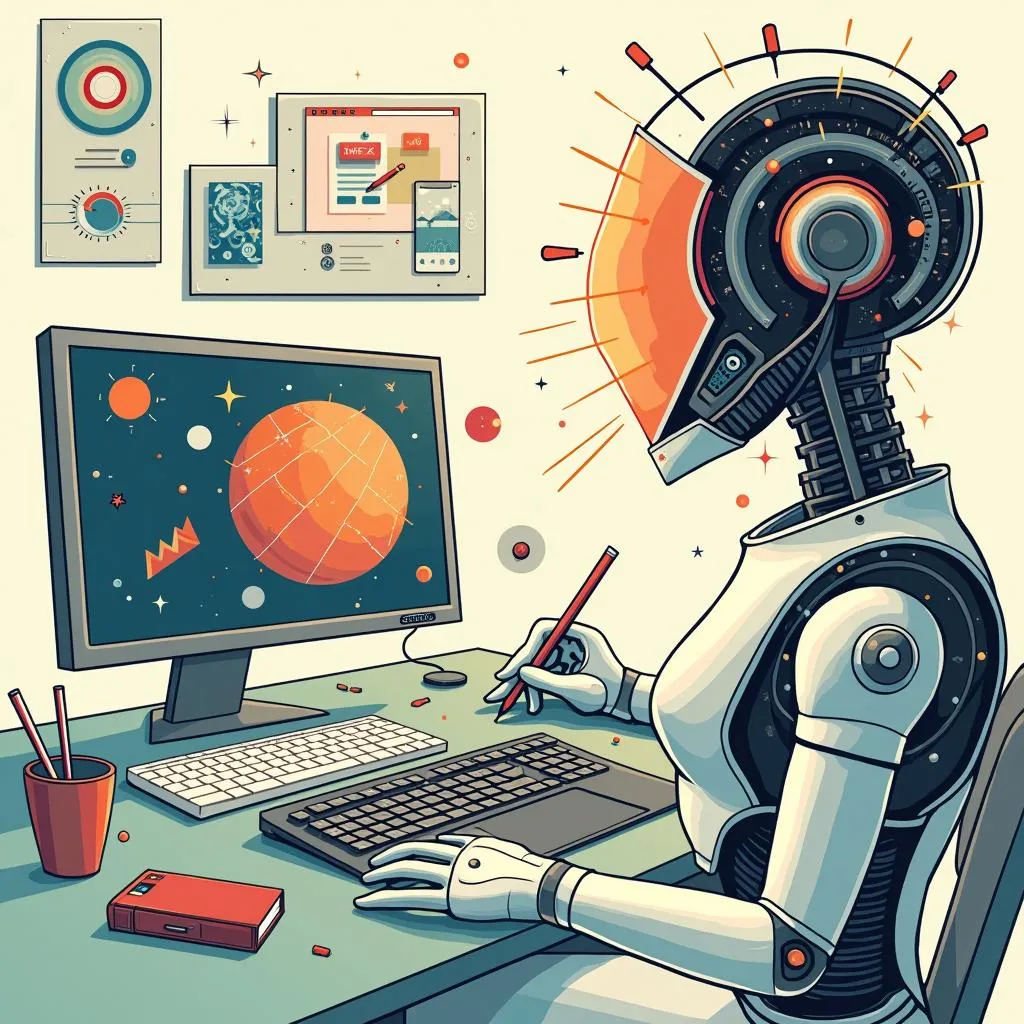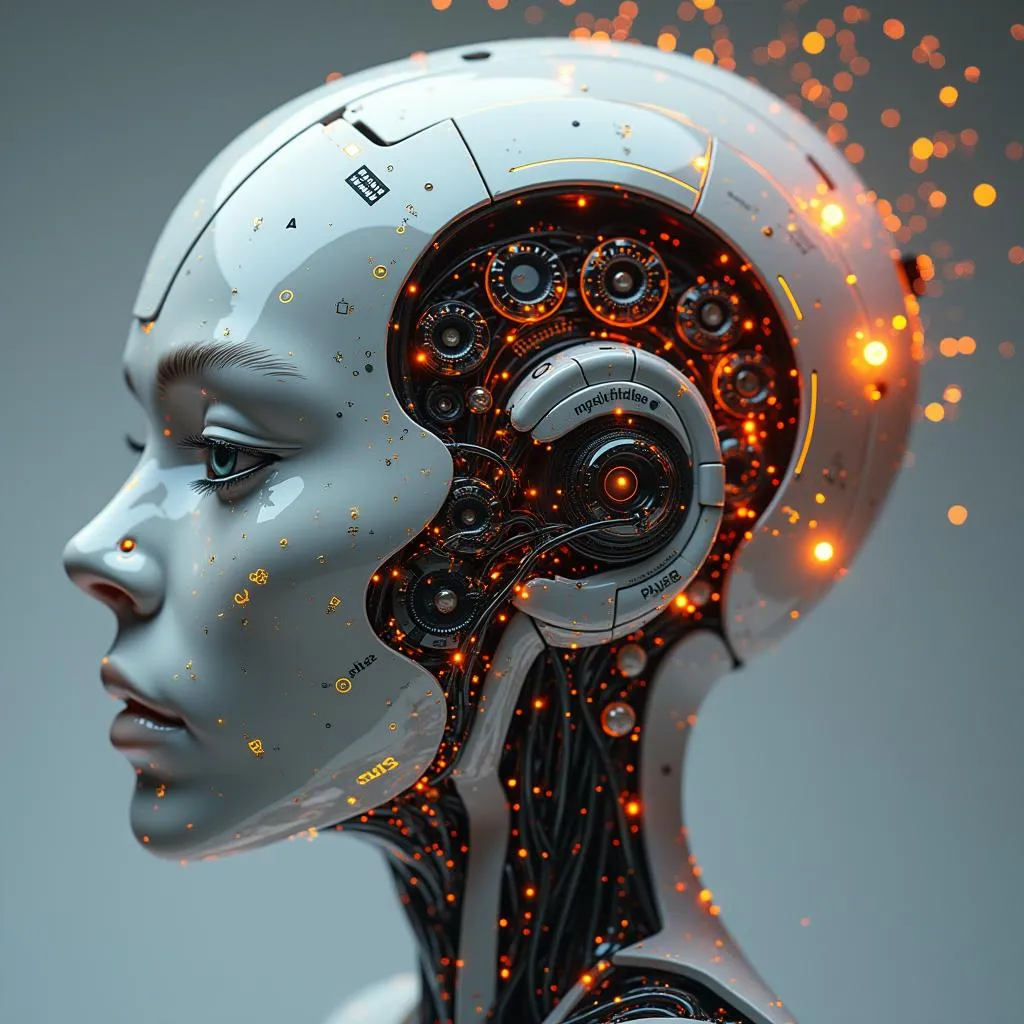The “Summarize Written Text” section in the PTE Speaking & Writing test is critical to assess your ability to condense a passage into one comprehensive sentence. In this post, we’ll practice these skills using the popular and relevant topic of Artificial Intelligence In Creative Industries. This topic has gained significant attention, given the rapid advances in AI technology transforming creative fields. Let’s jump into the practice examples.
Example 1: Summarize Written Text Practice Task
Artificial intelligence is increasingly integrated into the creative industries, redefining how art, music, and design are produced. AI programs can generate music compositions, artwork, and even assist in graphic design, allowing artists to expand their creative boundaries. However, some argue that AI might inhibit original creativity by replacing human input with algorithm-generated outputs. Despite these concerns, proponents believe AI enhances productivity and opens up new possibilities for artists, helping them to focus more on conceptual aspects of their work rather than the more mechanical and repetitive tasks. Therefore, while the role of human artists remains essential, AI complements their skills, contributing to the evolution of creative processes.
Question:
Summarize the passage in one sentence.
Model Answers for Band Scores
Band Score 90-85: High proficiency response
Artificial intelligence is transforming creative fields like art, music, and design by automating mechanical tasks, which supporters claim enhances artists’ productivity and creativity, although critics fear it could reduce originality.
Evaluation:
- Content: Fully captures the main argument, including the transformation AI brings, the debate between its benefits and potential downsides, particularly on originality.
- Form: Meets the word count requirement concisely.
- Grammar: Demonstrates accurate grammatical structure, including the well-positioned use of relative clauses.
- Vocabulary: Excellent word choice (e.g., “transforming,” “mechanical tasks,” “originality”).
- Spelling: Error-free.
 AI transforming music and art through task automation allowing growth in creativity
AI transforming music and art through task automation allowing growth in creativity
Band Score 75-70: Adequate response
AI is changing the process of creating art, music, and design by automating some tasks, but concerns exist about whether it diminishes original creativity.
Evaluation:
- Content: Covers the primary idea but lacks some elaboration on how AI assists artists conceptually.
- Form: Satisfies the word requirement.
- Grammar: Exhibits solid grammatical choices, but lacks complexity that higher-scoring answers demonstrate.
- Vocabulary: Suitable vocabulary without excessive repetition.
- Spelling: No mistakes.
Band Score 65-60: Satisfactory response
AI allows creativity in art and music by handling repetitive tasks, though critics worry that it could replace human input.
Evaluation:
- Content: Covers the issue but omits the perspective supporting AI’s role in expanding conceptual creativity.
- Form: Sufficient length but feels slightly less developed.
- Grammar: Correct but simpler grammatical patterns.
- Vocabulary: Adequate use of vocabulary but somewhat limited.
- Spelling: No errors.
Example 2: Summarize Written Text Practice Task
The impact of artificial intelligence on creative industries is profound, as AI tools can now produce sophisticated pieces of music, art, and even write stories. Tools like GPT-3 and DALL-E are changing how artistic expression is perceived, with some calling it a paradigm shift. However, AI in creative fields also raises philosophical questions regarding authorship and authenticity since many believe that true artistry comes from human experience and emotion. Nevertheless, industries are embracing AI, recognizing the potential for collaboration between humans and machines to revolutionize creative processes altogether.
Question:
Summarize the passage in one sentence.
Model Answers for Band Scores
Band Score 90-85: High proficiency response
The integration of AI tools such as GPT-3 and DALL-E is revolutionizing creative fields by producing art and stories, though concerns persist over authenticity and authorship, sparking a collaborative coexistence between humans and machines.
Evaluation:
- Content: Captures the main themes: AI innovation, concern over artistic authenticity, and focuses on integration between human and machine.
- Form: Meets the word limit perfectly.
- Grammar: Complex grammar with a variety of sentence structures.
- Vocabulary: Strong and appropriate word choices.
- Spelling: Error-free.
 AI models like GPT-3 and DALL-E changing art and story creation in collaborative ways
AI models like GPT-3 and DALL-E changing art and story creation in collaborative ways
Band Score 75-70: Adequate response
AI is transforming creative fields with tools like GPT-3 that assist in producing art and stories, though people worry about the authenticity of machine-generated creations.
Evaluation:
- Content: Partially covers some key points but misses out on the collaboration aspect between humans and machines.
- Form: Suitable but could use more elaboration.
- Grammar: Solid structure but less complex.
- Vocabulary: Nice usage, but lacks the range of higher-scoring entries.
- Spelling: No mistakes.
Band Score 65-60: Satisfactory response
With AI tools, art and stories are being created automatically, which raises concerns about the authenticity of art in creative fields.
Evaluation:
- Content: Basic interpretation of the passage’s central point but misses out on many key details about collaboration.
- Form: Slightly shorter than required for a more developed sentence.
- Grammar: Simple sentence structure without connectors or clauses.
- Vocabulary: Limited range.
- Spelling: No mistakes.
Vocabulary and Grammar
Below are 10 important words and expressions from the passages:
-
Algorithm /ˈælɡərɪðəm/ (noun) – A process or set of rules to be followed by a computer in problem-solving operations.
- Example: “Many AI programs use algorithms to generate new works of art.”
-
Revolutionize /ˌrɛvəˈluːʃənaɪz/ (verb) – To change something radically or fundamentally.
- Example: “AI is revolutionizing the creative industries by offering tools that assist in idea generation.”
-
Sophisticated /səˈfɪstɪkeɪtɪd/ (adjective) – Highly developed; advanced.
- Example: “AI tools have become more sophisticated, producing artwork that mimics human creations.”
-
Authenticity /ˌɔːθənˈtɪsɪti/ (noun) – The quality of being genuine or real.
- Example: “Artists fear that the authenticity of creative works may be questioned when AI is involved.”
-
Paradigm shift /ˈpærədaɪm ʃɪft/ (phrase) – A fundamental change in the usual way of thinking or doing something.
- Example: “The implementation of AI in arts is considered a paradigm shift by many experts.”
-
Authorship /ˈɔːθəʃɪp/ (noun) – The identity of a person who created a particular piece of work.
- Example: “Authorship becomes a contentious issue when AI generates artistic pieces.”
-
Inhibit /ɪnˈhɪbɪt/ (verb) – To prevent or slow down.
- Example: “Some believe that AI inhibits human creativity instead of fostering it.”
-
Collaboration /kəˌlæbəˈreɪʃən/ (noun) – The action of working with someone to produce or create something.
- Example: “AI is seen as providing new avenues for collaboration between humans and machines.”
-
Mechanically /mɪˈkænɪkli/ (adverb) – In a way that relates to machinery or automatic processes.
- Example: “Mechanical tasks are easily handled by AI, freeing up artists for more creative pursuits.”
-
Conceptual /kənˈsɛptʃuəl/ (adjective) – Relating to or based on mental concepts or ideas rather than practical tasks.
- Example: “AI tools allow artists to focus on more conceptual aspects of their work.”
Conclusion
Incorporating Artificial Intelligence in creative industries is rapidly changing how we perceive art, music, and design. While concerns over authenticity and authorial control persist, AI tools are providing exciting new possibilities for collaboration and creativity. Make sure to practice regularly and focus on summarizing concisely. Ready to try more? Leave your questions and comments below!